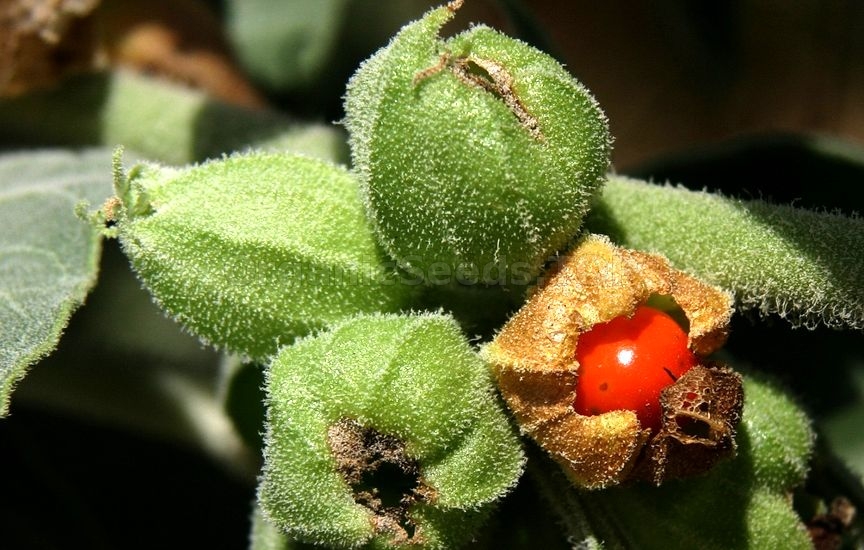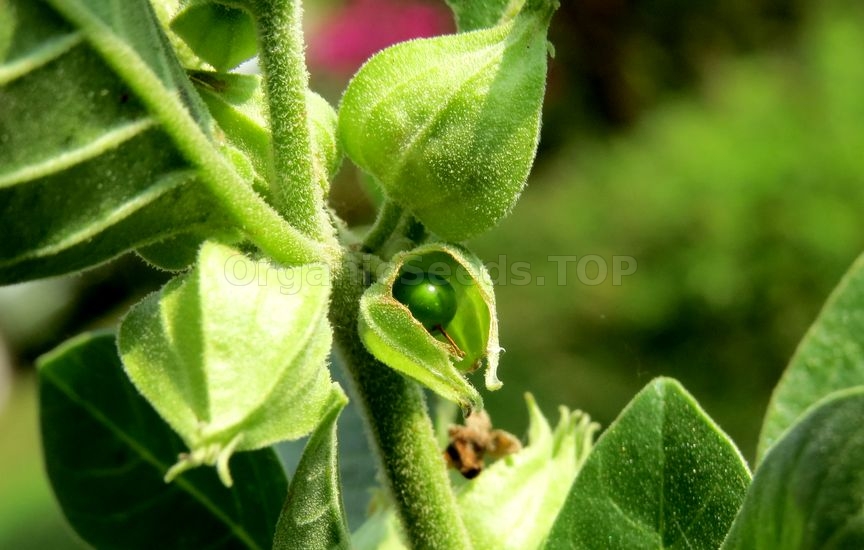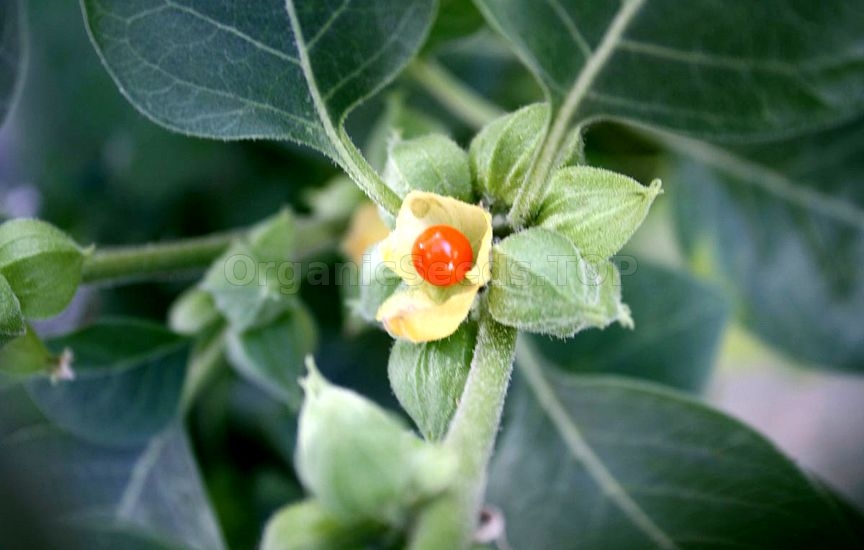Cultivation of Ashwagandha |
 In the wild, Ashwagandha (Withania Somnifera) grows profusely in most areas of South Asia and many closely related Withania species occur as far away as Northern Africa. As a commercial crop Ashwagandha cultivation is carried out mostly in Utter Pradesh and Madhya Pradesh in India. It is generally grown in fields characterized by slightly basic soils that have good drainage. Light red soils are suitable for this herb. The herb grows best in areas receiving about 500-750mm rainfall and at altitudes ranging from 600 to 1200 meters above sea level. The optimal temperature range is 20-32 degrees C. Due to the hardiness of the plant, Ashwagandha has historically been grown in areas that are not well irrigated and therefore not suitable for food crops. It is a cash crop in fields that would not be suitable to produce more profitable plants. Ashwagandha cultivation is possible even in mild drought conditions. Germination from seeds The Ashwagandha seeds are first planted in small areas or in a nursery in lines to allow them to germinate. The seeds are sown about 2 cm deep into the soil at a distance of about 10 cm. The amount of seeds germinated should be based upon a final transplanted density of about 1kg of Ashwagandha seeds per hectare. The line method of sowing is preferred at this germination stage as it promotes the development of a health root system compared to being sown using the broad casting method. The germination is best carried out just before the arrival of the monsoon season; and a few light showers during this stage produce the optimal seedlings. Once the young plants are about 30 days old, they are ready for transplanting into the main farming fields. In these fields they are planted at a distance of approximately 60 cm into well ploughed and aerated soil. While the 30 day age of the seedlings is a guideline, in practice the transplanting correspondence to the actual arrival of the first monsoon rains. Watering and Fertilization Given the ultimate medicinal use of the herb, the plants are usually not fertilized. In some cases organic fertilizer is used. The fields are also usually left to natural irrigation and artificial watering is only done in severe drought conditions where the survival of the crop is in jeopardy. It is this very hardy nature of Ashwagandha cultivation that has made this sort of farming popular on otherwise unproductive land. Harvesting The new crop will be ready for harvesting in about 180 days. This usually results in a harvest around early January. The plants will start flowering from mid December onwards and it is determined if they are ready to harvest by observing the development of the red berry like fruits.  The whole plant along with the roots is removed from the soil. The roots and berries are the main parts used. The plant is separated from the root about 2cm above where the aerial part begins. The berries are hand picked and separated from the plant. Both the roots and berries ate then subject to drying. The roots will most likely be cut down into smaller pieces while the berries are dried whole. Once fully dry, the roots are transferred for further processing while the berries are crushed to separate the seeds. A typical harvest is usually 350 to 400kg of dried Ashwagandha root per 1 hectare of land. Profits from Ashwagandha cultivation As per 2001 figures and using an INR-USD exchange rate of 40, the net profits observed on average for Ashwagandha cultivation are US$600 per hectare. Cultivation in Western countries would likely yield much higher profits in light of the recent increase in the popularity of Ashwagandha in these regions. You may need:Organic Ashwagandha Seeds (Withania somnifera)Rare plant seeds«Bitter Apple» - Citrullus colocynthis SeedsReishi / Ganoderma lucidum - Organic Mushroom Spawn |
|
|
